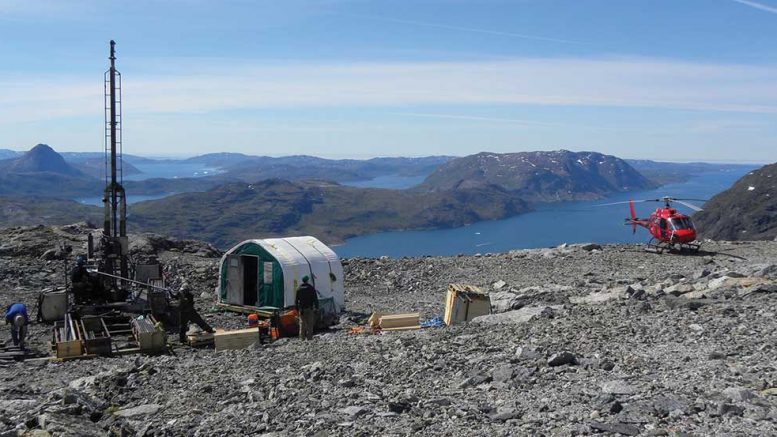Last week the U.S. president abruptly cancelled a state visit to Denmark after the Danes rebuffed his proposal to buy Greenland, a semi-autonomous Danish territory strategically located between the North Atlantic and Arctic Ocean and rich in natural resources like uranium and rare earths.
“’If he is truly contemplating this, then this is final proof that he has gone mad,’” Soren Espersen, the foreign affairs spokesman for the Danish People’s Party, told DR, a Danish broadcaster. “We’re open for business, not for sale!” Greenland’s Foreign Affairs Ministry tweeted.
Trump countered that, “Essentially, it’s a large real-estate deal.” He then tweeted a photograph of a golden skyscraper inscribed with the Trump logo, towering over a serene Arctic village, with the tagline: ‘I promise not to do this to Greenland.’”
But when Prime Minister Mette Frederiksen called his overtures absurd, he got a little defensive. “I thought the prime minister’s statement that it was an absurd idea was nasty,” Trump stated during a press conference on Aug. 21. “It was not a nice way of doing it. She could have just said, ‘No, we’d rather not do it.’ She’s not talking to me, she’s talking to the United States of America! They can’t say: ‘How absurd.’”
He then criticized the U.S. ally — claiming its contributions to NATO were sub-par. “For the record, Denmark is only at 1.35% of GDP for NATO spending,” Trump said in a tweet. “They are a wealthy country and should be at 2%. We protect Europe and yet, only eight of the 28 NATO countries are at the 2% mark.”
For all his ambitions for Greenland, Trump knows his real problems lie closer to home. Markets declined yet again on Friday morning when Beijing said it would raise tariffs on US$75 billion worth of American goods on Sept. 1 — further evidence that Trump’s year-long trade conflict with the Asian juggernaut is taking its toll, and that his claim that trade wars are “good and easy to win” may prove more difficult than previously thought.
Calling Chairman Xi Jinping’s move “politically motivated”, Trump tweeted after markets closed that he would raise existing tariffs on US$250 billion of Chinese goods from 25% to 30%, effective Oct. 1, and that he would tax an additional US$300 billion worth of Chinese goods at 15% instead of 10%, starting on Sept. 1. He then called on U.S. companies to stop doing business in China and make their products at home.
Trump saved much of his criticism, however, for U.S. Fed Chair Jerome Powell, who signalled at meetings in Jackson, Wyoming, also on Friday, that he has no immediate intention of cutting interest rates to help buffer the U.S. against the escalating trade conflict. “My only question is,” Trump said in a tweet, “who is our bigger enemy, Jay Powell, or Chairman Xi?”
Despite Trump’s assertions that the U.S. economy is humming like a fine-tuned engine, the truth is, the outlook is signalling concern and uncertainty. Recent news of an inverted yield curve — the first since 2007 — is a clear warning sign. An inverted yield curve is when interest rates on short term bonds are higher than on long-term bonds.
Economists like Paul Krugman, a columnist for The New York Times, point out that inverted yield curves predicted six of the last six recessions.
“Neither I nor anyone else is predicting a replay of the 2008 crisis,” Krugman penned. “It’s not even clear whether we’re heading for recession. But the bond market is telling us that the smart money has become very gloomy about the economy’s prospects.”
If Trump was uneasy, he tried his best not to show it. “We’re very far from a recession,” he insisted. Nevertheless, his administration has confirmed that it is considering measures to boost the economy, such as a payroll tax cut.
As for his real-estate ambitions, who knows where they may lead him next.
At a press conference in Tokyo with Japanese Prime Minister Shinzo Abe in May, The New York Times reported that Trump described North Korea as “all water-front property – it’s a great location, as we used to say in the real-estate business.”


I found the editorial to be pointless fluff, a
typical anti-Trump opinion piece really.
Your complete lack of grasp of the much bigger picture
is blatant. For decades, China has been preparing
for a ‘shooting war’ with the US by 2030.
It is this reason they shifted to a hybrid communist-capitalist economic model, to fund military expansion.
Trumps, tariffs are the absolute worst nightmare for the Chinese. But then again, Trump was never supposed to get elected.
One just has to look at the big picture!
Trump lost his father’s money just as he his doing for the United States.
how is trumph buy greenland with no money 250 trillion defeset to pay first not going to happen??? jorgy.